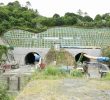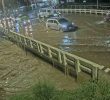The environment group Interface Development Interventions Inc. has criticized City Hall’s recommendations on aerial spraying, calling it a sellout. Below is the group’s statement:
An environmental NGO criticized the report of Eng. Luis Jacinto, city planning coordinator, on the controversial proposal to ban aerial spraying in Davao City branding it as a �sell-out that intentionally omitted glaring facts to come up with recommendations tailored to favor only banana corporations.�
Lia Jasmin Esquillo, executive director of the Interface Development Interventions, Inc. (Idis) said Jacinto refused to recognize the complaints and facts presented by various groups and experts on the effects of aerial spraying and the chemicals being used in the practice to the health of the people and the environment.
�This report is highly questionable…from the process they undertook to their conclusions and recommendations. First, they gave a lengthy discussion on the details of the banana industry but did not mention facts and figures about the number of families living within and around the plantations that are sprayed with pesticides on a regular basis,� Esquillo said.
�Second, what kind of review did they make on the health complaints? They�re quick to deny any relation of the health complaints to pesticide exposure when they did not even consult or recognize the testimonies of internationally recognized experts and personalities like those from the National Poison Management and Control Center of the University of the Philippines, an agency that even the Department of Health consults on issues about chemical poisoning,� Esquillo added.
She further said that even the section on pesticides in the report was carefully calculated to not mention their deadly nature.
Jacinto, in his report, said that the pesticide usage of banana plantations in the city in 2005 reached to P1.7 billion, with fungicide (those that are being aerially sprayed) accounting to 75 percent of the kinds of pesticides being used.
Still on his report, Jacinto said that the �fungicide used in the banana plantations had a total value of P1.312 billion last year. These include those that are categorized as protective-contact fungicides, which do not enter the leaf but as an exterior shield as daconil, dithane, manzate, vondozeb, mancozeb and antacol.�
�Why did the report not mention the known hazardous effects of these pesticides on humans? Even the label of Dithane says the pesticide causes cancer, blindness, and thyroid disorders. Why were these facts not included?� Esquillo asked.
�Instead Jacinto bombarded us with monetary figures reaching to billions of pesos,� Esquillo added.
On the Jacinto recommendation for the implementation of a 50-meter buffer zone Esquillo said, �there is not even a one-meter of honest to goodness buffer zone in place now, after all these years of plantation operation. And they expect the people to believe in this 50-meter buffer zone myth�?
�Besides, according to the Environmental Protection Agency of the United States, aerial drift on the average reaches to more the 3 kilometers. How can a puny 50 meter stretch with only 5 meters devoted to permanent trees serve as a buffer?� Esquillo added.
In his report, Jacinto said that in communities, the �width of the buffer area should be about 50 meters from the identified peripheral boundary of the lot used for residential/dwelling purpose or used for public gatherings.�
�A width of not less than five meters from the peripheral boundary of the adjacent residential dwelling shall be set aside for planting of permanent nature cover like trees. Growing of crops subject to agro-chemical application may still be allowed in the buffer area but application shall be limited only to manual,� the recommendation added.
Esquillo also questioned the supposed barangay consultations that formed part of the basis of the recommendations.
�They did not conduct barangay consultations. They conducted banana growers� consultations. Only plantation people were invited. There was glaring lack of public information that the consultations would be held. The complaining residents only got to attend some of the consultations because we told them about the schedule. They did not get any invitation from the barangay or from the Jacinto team.
�We waited for two months for the Jacinto report expecting at the least a balanced statement of facts. But we got nothing,� Esquillo concluded.
Food









